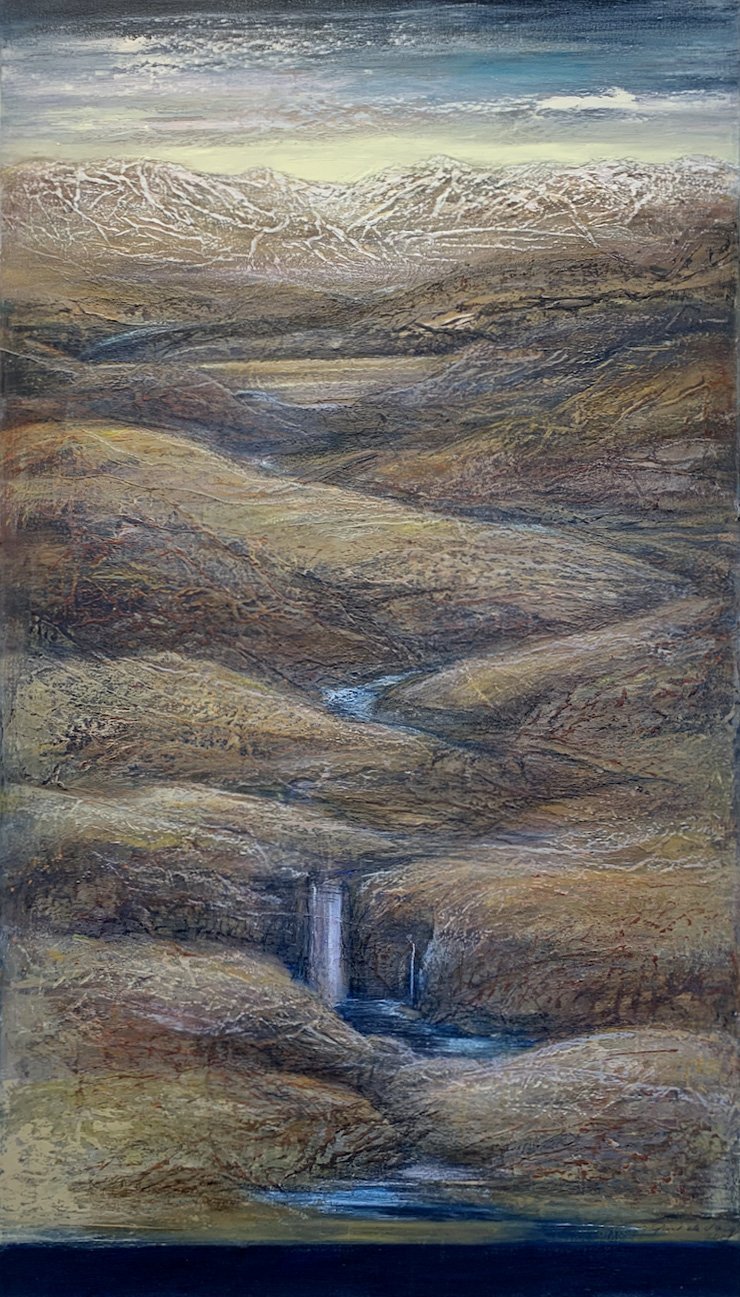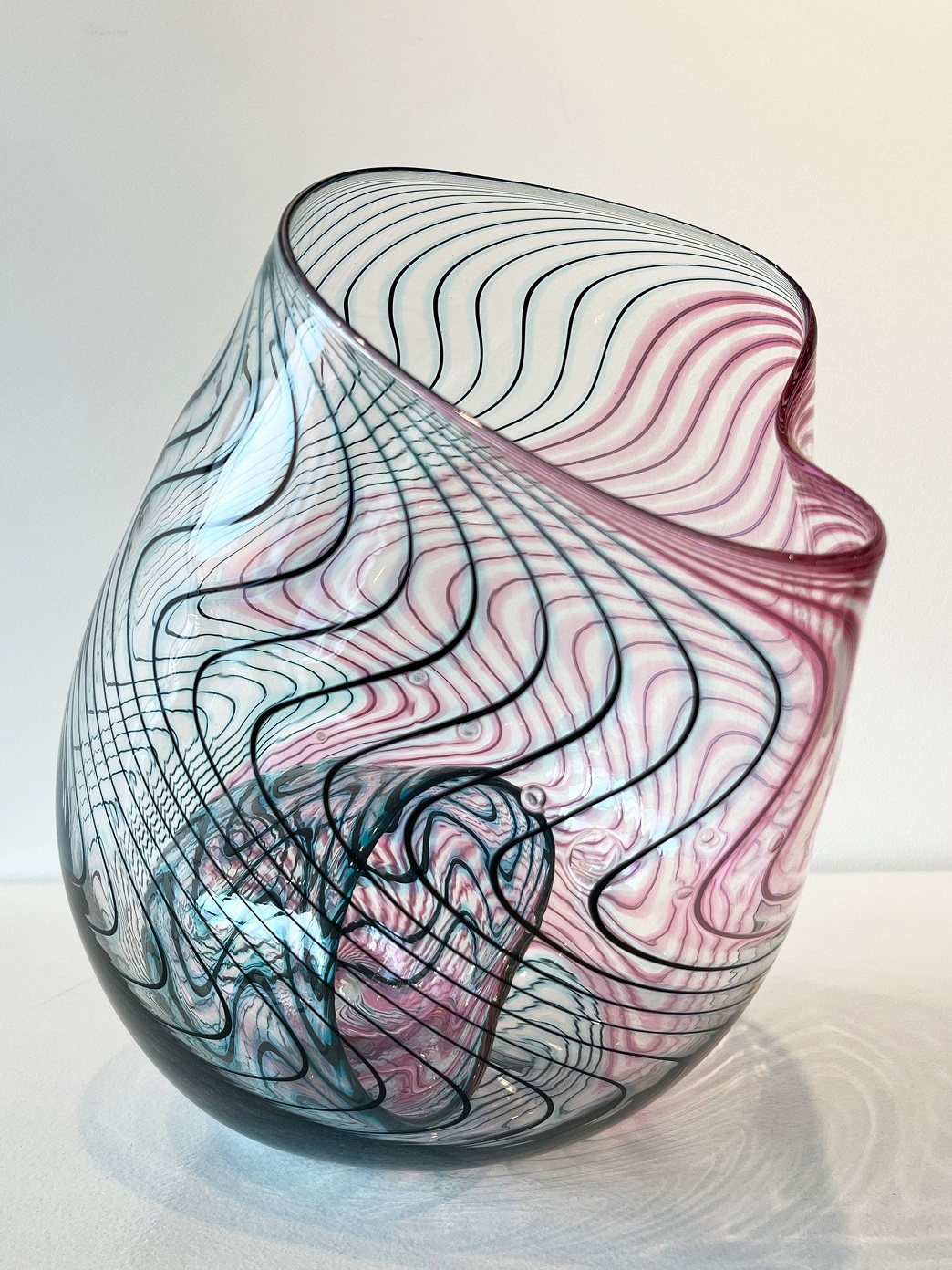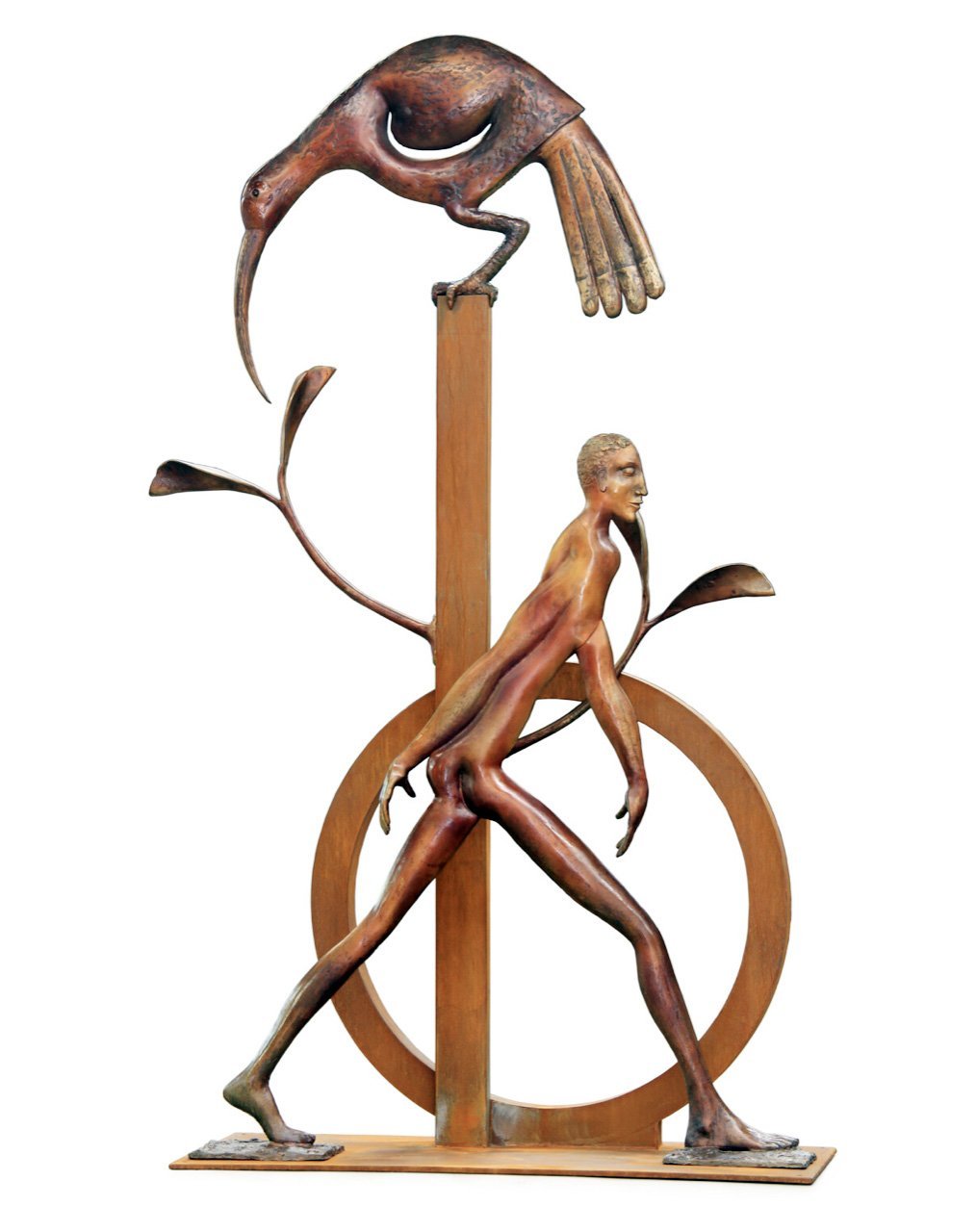
(Hullabaloo Art Space, Cromwell)
Fresh from a refurbishment of the gallery, the Hullabaloo collective is celebrating with a joint exhibition, showcasing the work of each artist through painting, sculpture, ceramics, and jewellery. Andi Regan’s Broadening Horizons godwits lead the way into new adventures, soaring along the wall in playful flight, sending shadows dancing past their wings with the changing light.
In Let there be water, Gail de Jong places the viewer up high, looking across the winding river towards the horizon, a twisting, rugged path through the plains, heading for the snow-dusted mountains. It’s a brief rest on a journey, with the biggest steps into the unknown still to come, the world echoing and still, and the distance to be crossed alone.
Lizzie Carruthers’s anthropomorphic animals always bring humour and whimsy, with a very dapper fox decked out like a vulpine Mr Darcy, an intimidating pair of bulls keeping watch over proceedings like bovine bodyguards, and a piquant owl peering down through a portal, the night sky stretching into an infinite cascade of stars beyond.
Annemarie Hope-Cross’s photogenic drawing Summer, Recovering is characteristically elegant and ephemeral, like looking back into the misty depths of memory, the tangible remnants of a dream. Eric Schusser’s Trees diptych is the perfect atmospheric continuation of that feeling, his stunning photographs of delicate branches reaching for one another across the divide of their frames, curving like wings to form a protective barrier over the viewer, the cool and warm tones colliding.

Gallery Thirty Three, Wanaka)
The son of renowned glass alchemist John Croucher, glass artist Luke Jacomb’s bond with the medium is clearly intensely personal, a link between the past and the future, connecting with creative minds across the world through process, vision, and beauty. He references his father’s metaphor for the evolving journey with glass, seeing it as a perpetual railroad. The artist boards a train with every new idea and technique, following the twists and turns of the route, stopping at a platform to examine the landscape, looking at what’s coming into the station next and deciding which connection to take. Those trains have carried Jacomb across oceans and decades, drawing inspiration from the past and present wielders of glass magic in Asia, America, and Europe, sharing his own knowledge and expertise in return.
In his latest collection, Jacomb combines European techniques with Maori and Pacific design, imagining an alternate history where the Venetians came to these shores, sharing their own traditional arts. The result is strikingly beautiful, mimicking the shapes and textures of woven flax, baskets, and paddles with handblown glass. His Venetian Kete Baskets defy the solidity of the medium, appearing illusively pliable, as if bending and flexing with use. One artform pays homage to another, capturing the skill, unique patterning, and the coexistence of functionality and artistry.

(Milford Galleries, Queenstown)
Milford Galleries’s "Masterworks" brings together more than 20 of New Zealand’s greatest artists, tracing a path through our unique cultural history, from the early 20th century to the present. The exhibition would be worth a visit simply for Frances Hodgkins’s Untitled painting of 1946, a poignant piece born in the aftermath of World War 2, a heartfelt time capsule of mixed emotions. The work depicts the scars of post-Blitz London, the mingled joy and despair of a wounded, grieving city emerging from the ruins, battered and bruised, slowly unfurling, returning to life in the dawning spring. Hodgkins contrasts the grey tones of war—the memory of swirling smoke and extinguished lights—with the golden touch of sunlight, illuminating trees and bricks.
Almost seven decades later, Paul Dibble created Parallel Worlds, a work that resonates with the strength of its medium, cast in bronze and corten steel, yet each line delicately wrought, almost quivering with suppressed movement and life. Perched high, the beautiful, extinct Huia looks down on the world below, a monument to all the species we’ve allowed to be lost to history. Below, a human figure strides forward into the unknown future, eyes closed to everything that’s been sacrificed along the way. The piece is constructed with a rhythmic, circular composition, the eye constantly moving up and around, as if following the ticking hands of a clock, tracking the perpetual cycle of time.
By Laura Elliott












